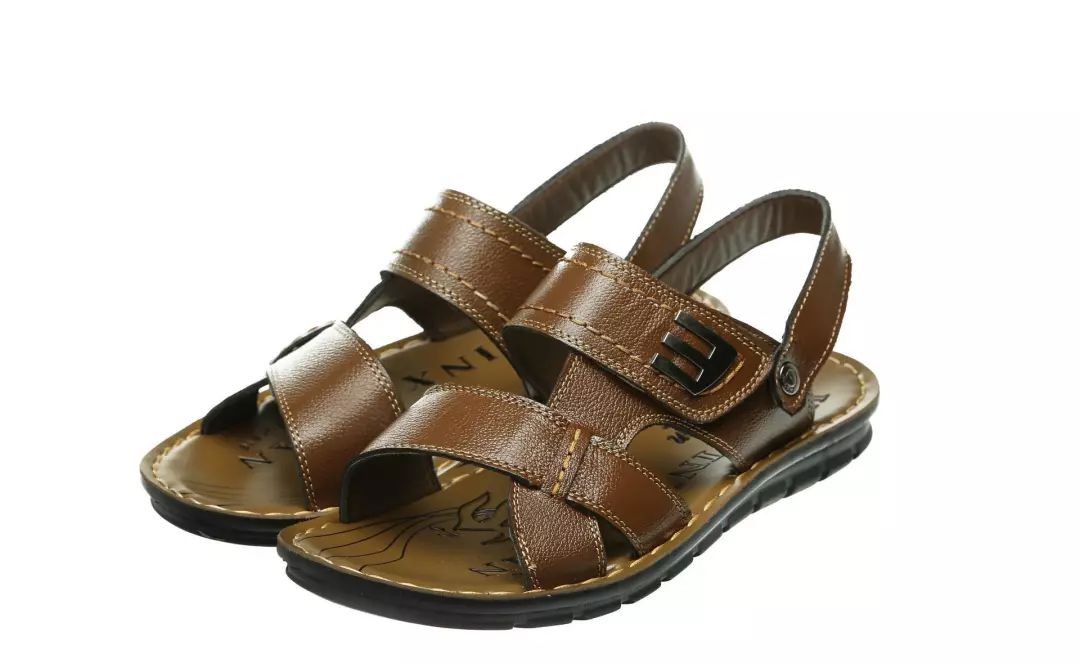As an ideal foot companion in summer, leather sandals stand out for their excellent breathability and elegant texture. These shoes are mainly made of natural leather or high-end artificial leather, with particular attention to the manufacturing process: the upper is mostly made of flexible cowhide or sheepskin, which is ergonomically cut to achieve a perfect fit for the foot; the sole is matched with non-slip and wear-resistant rubber or polyurethane material to ensure stability and safety when walking. From daily commuting to business casual, and even outdoor exploration scenarios, designers have developed multi-dimensional product lines for men, women, and children according to different needs.
The essence of high-quality leather sandals is reflected in the details – uniform and dense stitching technology, smooth and glossy edge wrapping design, combined with a simple and generous appearance, which cleverly integrates practical functions and aesthetic value.
Sensory quality inspection requirements:
1. Overall appearance:
(1)Neat, flat, stable, clean, and symmetrical (except for special style designs).
(2)The upper should be properly and flatly lasted. Structures such as eyelet punching and braiding should not be deformed.
(3)The insole should not expose nail tips, and there should be no protruding nail tails.
(4)The upper and lining should not have obvious color change or discoloration (except for special upper leathers such as scraped leather and color-changing leather).
(5)The insole should be firm, flat, and free of obvious sensory defects.
2.Upper (surface):
(1)Leather, artificial leather, and synthetic leather upper (surface):
The color, thickness, villus thickness, and pattern of the same part of the same pair of shoes should be basically consistent (except for special design styles).
There should be no cracked paste, cracked surface, or loose surface (except for leather sandals with special upper materials such as cracked leather).
Exposing the upper edge and white frost are not allowed.
(2)Textile upper (surface):
No obvious weaving defects, no exposed upper edge, and serious defects should not exist in the main parts.
Eyelets should be pierced through, and the eyelet walls should be smooth.
3.Counter and toe puff:
For leather sandals with counters and toe puffs, the counters and toe puffs should be upright, flat, symmetrical, and in place, and should not shrink or deform.
4. Heel: Firmly assembled, flat and upright, symmetrical in size and height, consistent in color, free of cracks, with smooth covering, and tight heel openings.
5.Seam edge: Neat and tight, without glue opening, glue shortage, or glue overflow.
6.Stitching:
(1)Neat thread paths, uniform stitch density, consistent tightness of bottom and surface threads.
(2)Skipped stitches, repeated stitches (except for process-designed backstitching), broken threads, reversed threads, open threads, and off-track stitching are not allowed.
7.Outsole: The color and pattern of the same part of the outsole of the same pair of shoes should be basically consistent (except for special design styles).
8.Folded edge: Basically neat, uniform, and smooth, without exposed cut openings, and cracks are not allowed.
9.Accessories:
(1)Accessories on leather sandals should be firmly assembled, basically symmetrical, and consistent in color (except for special style designs), with no obvious sensory defects.
(2)Metal parts should have smooth surfaces without sharp edges and tips.
(3)Zippers should slide smoothly, and both ends of the zippers should be free of burrs.
10. Dimensions: Size deviations should comply with relevant national or industry standards.
Post time: May-27-2025






